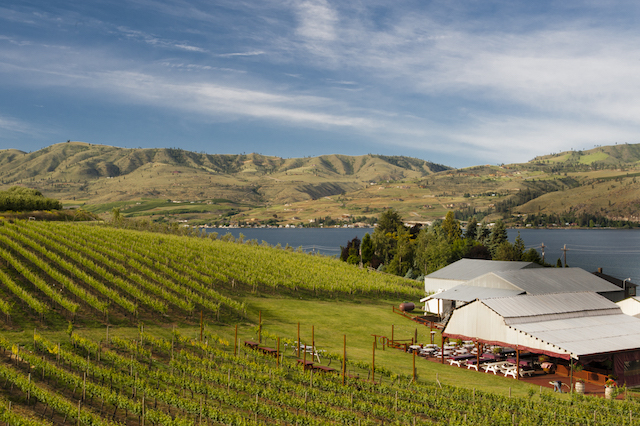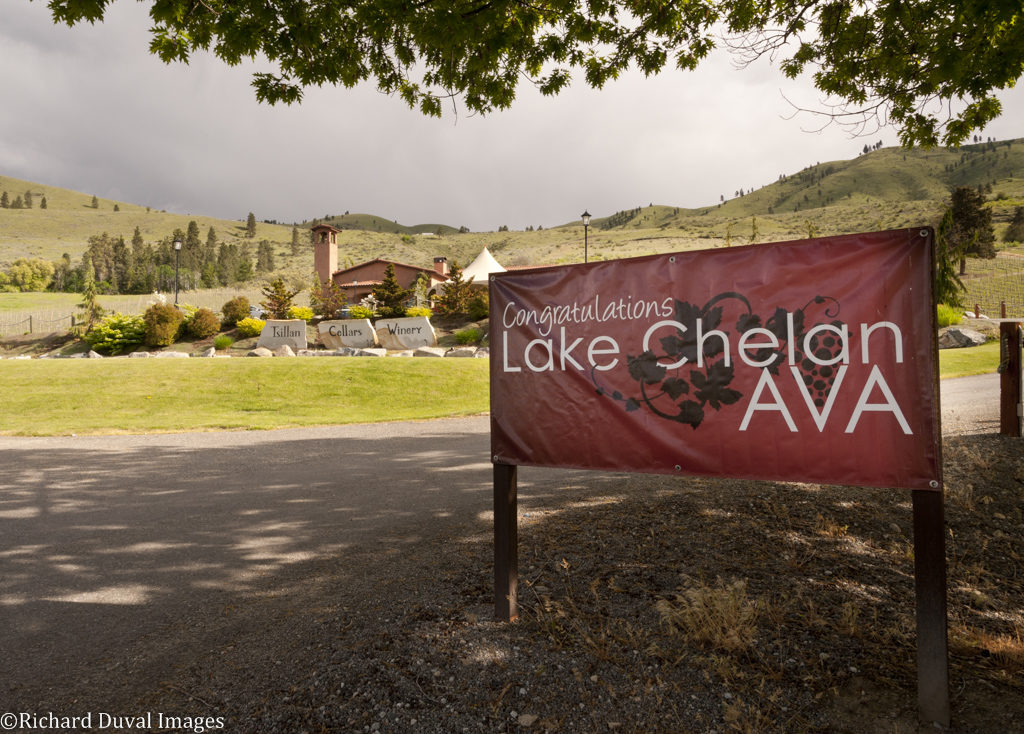
Bob Christopher’s move to transition orchards to vineyards in 1998 inspired the Kludt family to follow with vineyards and the creation of Lake Chelan Winery near Manson, Wash. (Photo byRichard Duval Images)
Editor’s note: This marks the first in a two-part series by Judy Phelps, past-president of the Lake Chelan Wine Growers, in conjunction with the 10th anniversary of the Lake Chelan American Viticultural Area.
MANSON, Wash. – In the past dozen years, the Lake Chelan Valley has grown from 15 wineries in 2006 to more 30 wineries today. Later this month, on May 30, the Lake Chelan AVA (American Viticultural Area) celebrates its 10th year anniversary.
We take wine and vineyards in the Lake Chelan Valley for granted now, but it was not that long ago when the main emphasis in the Lake Chelan Valley was commercially grown apples. How did the transition to grapes happen and how did Lake Chelan become one of the fastest-growing wine regions in Washington state?
You have to go back to 1998 when a couple of local orchardists – Steve Kludt and Bob Christopher – got together and decided to plant wine grapes in place of apples in their orchards. Bob planted the first vineyard on the north shore of Lake Chelan in 1998, with Steve following shortly thereafter.
Lake Chelan was a successful fruit-growing area for a century prior to wine grapes being planted but in the 1990s the apple market collapsed. Local farmers quickly followed Kludt and Christopher’s lead and began to plant wine grapes.
By 2006, the vineyards had grown to 140 acres, the number of wineries reached 15 and the Lake Chelan Wine Grape Growers Association had been formed.
Early pioneers of the fledgling vineyards and wineries include Paul Benson (Benson Vineyards), Mary and Bob Broderick (Chelan Estate), Denny Evans (Tunnel Hill Winery), Bob Jankelson (Tsillan Cellars Winery), Larry Lehmbecker (Vin du Lac), Lynn and Henry Munneke (Chelan Ridge Winery), Dean and Heather Neff (Nefarious Cellars), Katy and Milum Perry (Tildio Winery), Ray Sandidge (Lake Chelan Winery) and Don and Judy Phelps (Hard Row to Hoe Vineyards) among others. They recognized that the letters ‘AVA’ really DO matter.
One of the functions of the U.S. Treasury’s Alcohol and Tobacco Tax and Trade Bureau, created in 2002, is to designate viticultural areas. The TTB establishes these areas to allow vintners to better describe the origins of their wines and allow consumers to better identify wines they purchase.
Beyond drawing the boundary lines, the designation helps consumers shop with confidence regarding the source of the grapes used in the wine they are buying. Geographical designation goes hand-in-hand with the idea of terroir and that where the grapes are grown has a huge impact on the finished wines.
Busacca, Lake Chelan file AVA petition in 2006

The Lake Chelan Wine Growers Association, with the help of Washington geologist Alan Busacca, filed the Lake Chelan AVA petition in December 2006. What made the Lake Chelan Valley unique enough to receive its own AVA? One cannot visit Lake Chelan without thinking of terroir. High-desert climate, volcanic pumice soils, glacial deposits and the giant heat sink of the lake referred to as the ‘lake effect’ which acts to moderate temperatures, combine to create a unique growing environment for wine grapes and the wine produced from them.
Ten years ago on May 30, 2009 the TTB granted official recognition of the Lake Chelan AVA regulating the use of the word “Chelan” on wine labels. Wines must be made from grapes (85 percent minimum) grown within the Lake Chelan AVA boundaries in order to use “Lake Chelan” on the label. The consumer knows that the wine they are purchasing was grown in the valley.
Though Lake Chelan was the 11th AVA in Washington state, what had been a recreational mecca for years now showcases wineries and vineyards as the second jewel in Lake Chelan crown (the first being the lake itself). The mountains, the crystal-clear turquoise waters of Lake Chelan, rolling hills of apple orchards and vineyards provide a gorgeous backdrop as visitors travel around the valley.
Today, about 300 acres are planted at elevations ranging from 1,150 to 2,000 feet. The main white grapes are Riesling, Pinot Gris, Gewürztraminer, Viognier and Chardonnay. Primary red varieties are Cabernet Franc, Pinot Noir, Malbec, Merlot and Syrah.
There are special events planned to celebrate the anniversary at wineries throughout the Lake Chelan Wine Valley from June 8–10. These events include an opening reception on Friday, June 7 at the the Lake Chelan Chamber of Commerce & Visitor Center in downtown Chelan, master classes, a grand tasting and numerous other happenings at individual wineries.
We hope that wine lovers throughout the Pacific Northwest can experience this historic weekend with us.

Leave a Reply